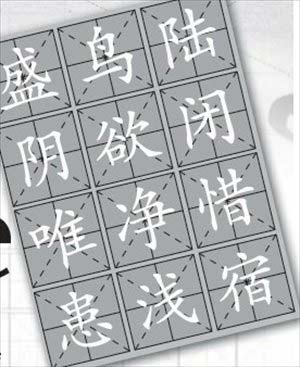
China, Japan, and the Koreas - these East Asian countries not only share general physical features like black hair and yellow skin tone, they also share unique languages using writing systems vastly different from Western alphabets.
When one compares the written languages of Chinese, Japanese and Korean, it is quickly seen that some of the characters used look very much alike, and in some cases, the characters are exactly the same. The three languages are deeply connected. Putting aside the political and historical elements, new steps have been taken recently to bring the connection to a new era.
During the eighth session of the Northeast Asia Trilateral Forum, held in Hokkaido in Japan in July, a draft chart was released showing 800 commonly seen Chinese characters that are shared and used by these three languages, and a final chart will be formally announced in 2014, according to Xinhua.
Based on 2,500 commonly used Chinese characters in China, 1,006 in Japan and 900 in South Korea, scholars attending the forum chose 800 characters shared by the three countries. According to the evaluation of the forum, it will lay a foundation for youngsters from the three countries to understand each other's languages if they can master these 800 characters.
With the aim of seeking common ground and promoting exchanges, the trilateral forum was co-sponsored by China's Xinhua News Agency, Japan's Nikkei Inc and South Korea's JoongAng llbo. Since the first forum in 2006, the annual meeting has been held alternately in the three countries. The draft chart of 800 Chinese characters is one of the main achievements of this year's forum.
Similarities and differences
Languages of these three countries still have much in common. Those who travel to Japan find that although they can't understand a bit of Japanese when listening to it, they sometimes can guess the meaning when reading it, because some characters have retained their original Chinese meaning. However, with some characters the meaning has changed substantially.
Zhu Guirong, an associate professor of Japanese education at Beijing Foreign Studies University, used an example to explain: The Chinese character niang (娘) means mother in Chinese, but in Japan it means daughter. Another two characters shou zhi (手纸), meaning toilet tissue in Chinese, means letter in Japanese. One can imagine how embarrassing it could be to confuse the two.
"Those characters with the same meaning, or those with the totally different meaning might be easier for Chinese students to learn. But those that are partially the same and partially different are the hardest to deal with," said Zhu.
Another fact was mentioned by Lim So-yeon, a Korean girl who has been living in China for over 10 years. Xian sheng (先生) is an ancient expression used when Chinese students addressed their teacher, however, it is not used often. Koreans, on the other hand, still use it and write it in traditional Chinese characters.
